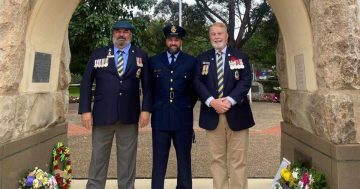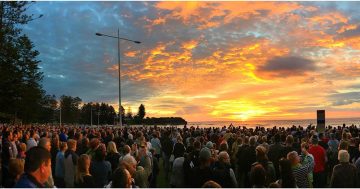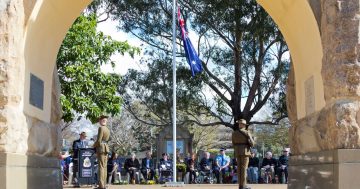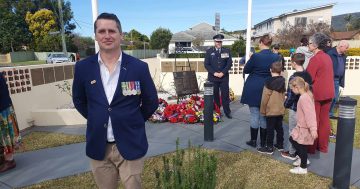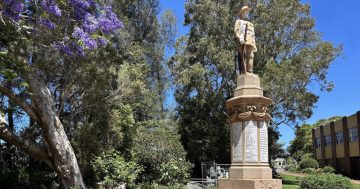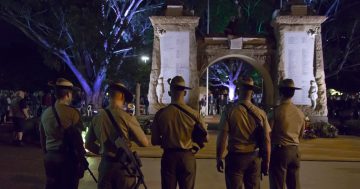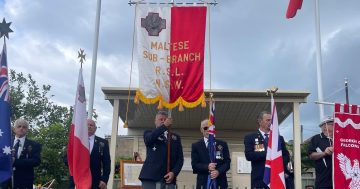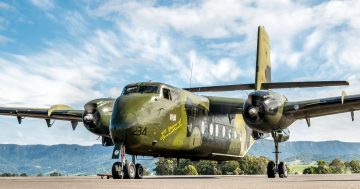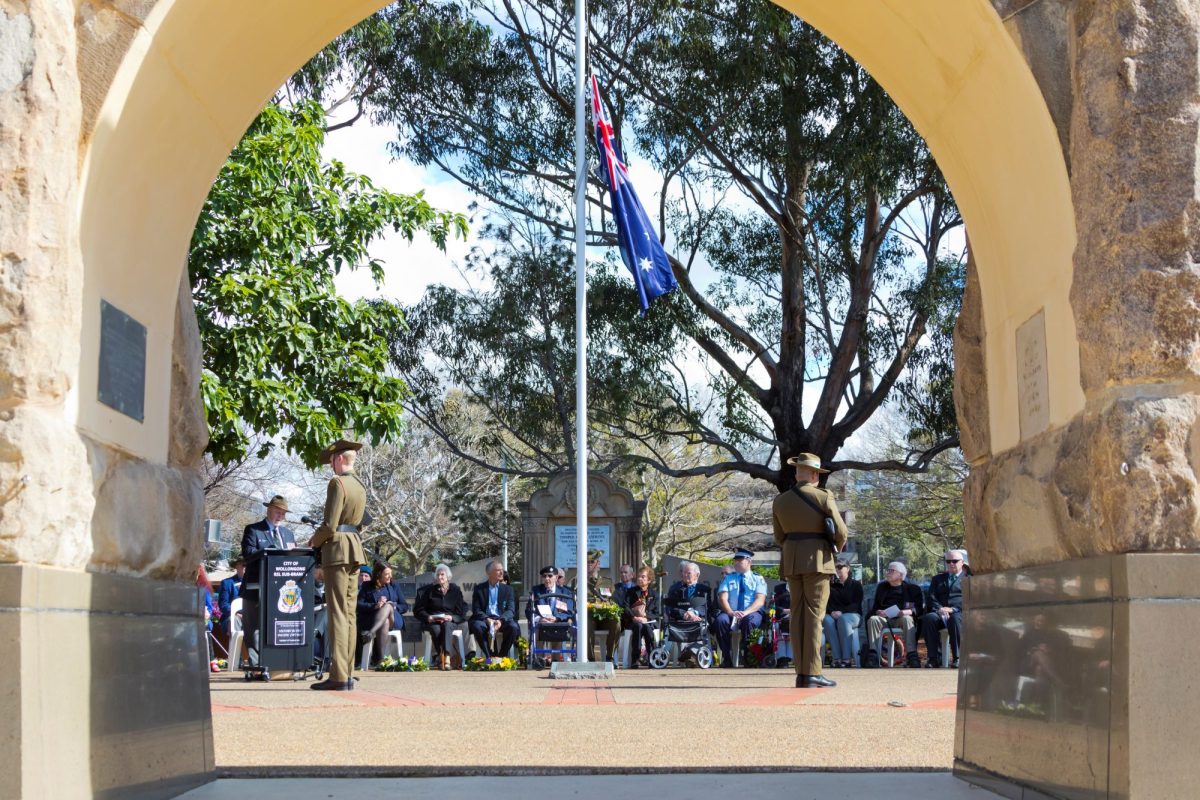
The Victory in the Pacific Day service at the Wollongong Cenotaph in August. The memorial arch was moved to MacCabe Park in 1984. Photo: Nardia Guillaumier.
The RSL is urging all Australians to take a pause on Remembrance Day this Sunday (11 November) in honour of all the men and women who have served and died for their nation.
The 11th hour of the 11th day of the 11th month marks the moment the guns fell silent on France’s Western Front after the bloodshed of World War I.
Over the past century, this moment has been adopted across the world as a time to remember those who served and sacrificed in all wars and conflicts.
This year the RSL is asking all Australians to “Remember to Remember” – to commit to pausing for a minute to remember those who gave their lives in service to their country, those who returned home injured or ill, and those who serve our nation today.
More than 102,000 service men and women have made the supreme sacrifice for Australia in all wars and conflicts. In World War I alone more than 62,000 Australians died, and 156,000 suffered wounds or illness.
RSL sub-branches across the Illawarra will hold commemorative services on Sunday. The City of Wollongong RSL sub-Branch service will be held at the Wollongong Cenotaph from 10:45 am.
The RSL suggests contacting your local sub-branch to learn about services in your area.
Many suburbs in the Illawarra have a war memorial or local roll of honour to commemorate those who have served and died for their country. Here’s a guide to some memorials you can visit this Remembrance Day.
Austinmer Memorial, Austinmer Beach, Lawrence Hargrave Drive
According to the Illawarra Remembers website, Austinmer residents started to raise funds at the end of World War I to construct a memorial for all of those who served. A total of 245 pounds was raised through raffles and donations. The names on the memorial are those from the surrounding towns south to Bulli and north to Coledale, including four who were killed. Originally dedicated on 26 January 1922, inscriptions and names for World War II and other conflicts have been added to the sides of the obelisk.
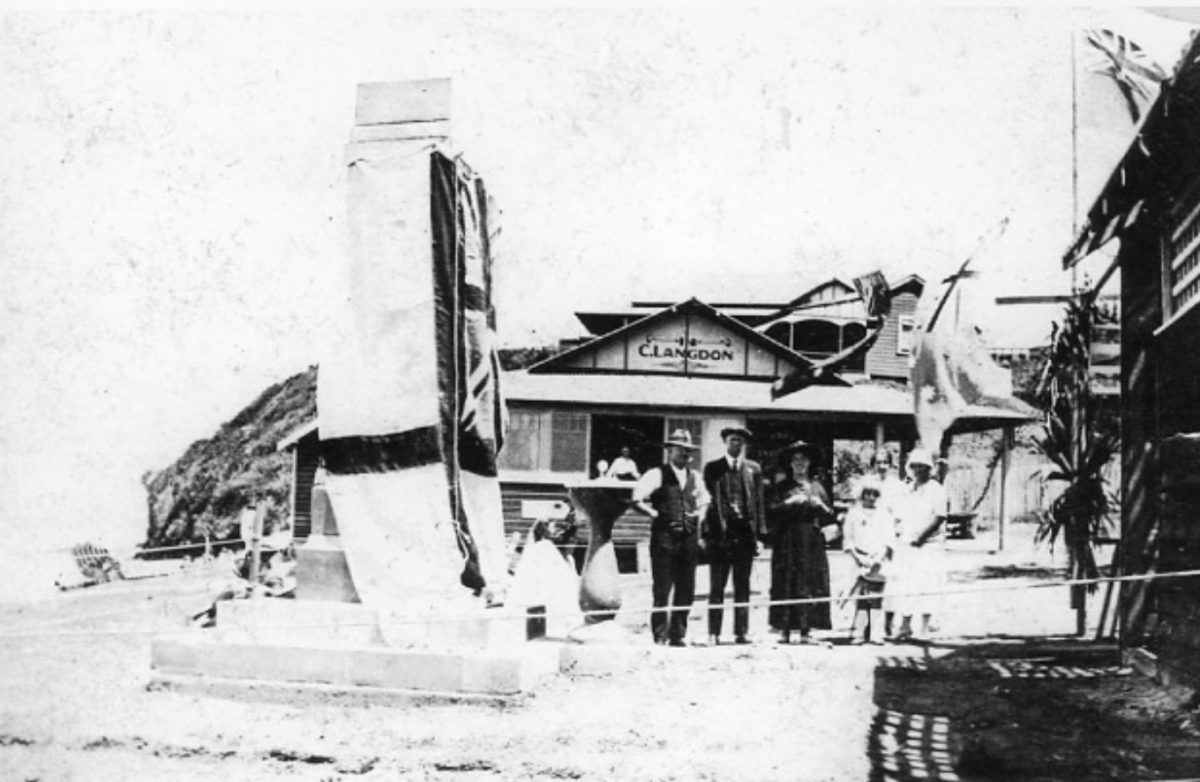
The unveiling of the Austinmer war memorial in January 1922. From left: Don Lett, John Coffey, Mrs Coffey, Mrs Lett. Image: From the collections of Wollongong City Libraries and the Illawarra Historical Society – P21/P21090.
Bulli Great War Memorial, Slacky Flat Park
Bulli Great War Memorial was unveiled on 26 April 1924. The plaque on the front of the pedestal contains the dedication to those from the Bulli and Woonona areas who served in World War I. Below the text is an honour roll of those who died during the conflict. The three other plaques bear the names of the remaining enlistees. Some of these have had the letter ‘K’ added to them, indicating they were killed. Originally located at the corner of Hopetown Street and Princes Highway, the memorial was re-erected at Slacky Flat Park during the Back to Bulli celebrations in September 1989. There is also a Bulli-Woonona War Memorial in front of the Bulli Community Centre on the Princes Highway.
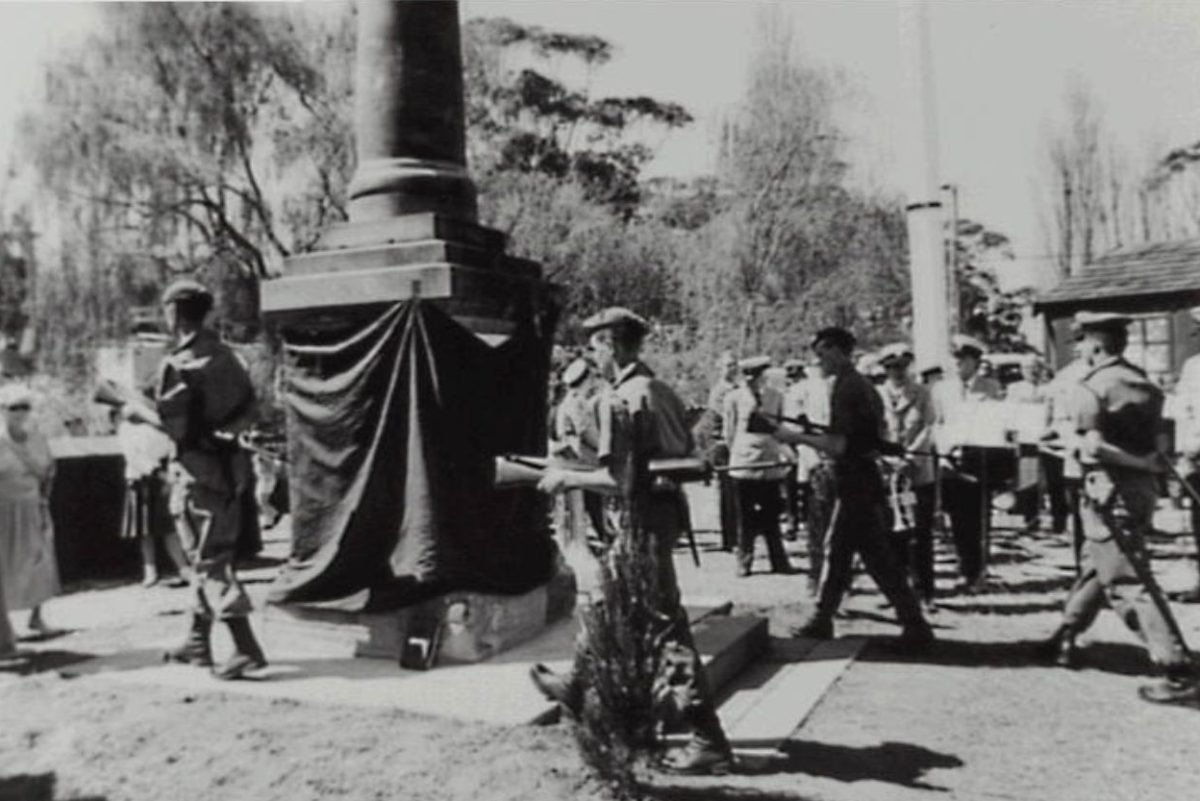
The official unveiling of the re-erected memorial during the Back to Bulli celebrations in 1989. Image: From the collections of Wollongong City Libraries and the Illawarra Historical Society – P01/P01139.
Thirroul Cenotaph, Woodward Memorial Park, Lawrence Hargrave Drive
The memorial was erected in 1919 on the corner of Railway Parade and according to the NSW War Memorials Register, it’s considered the oldest World War I monument in the Illawarra. Its foundation stone was laid on 18 October 1919 by Mrs Arnold Higgins and the official unveiling was performed by Mrs “Grannie” Riach on Anzac Day, 25 April 1920. In 1978, the memorial was hit and damaged by a truck. It was repaired, although the fountains ceased to function, and it was moved to outside the Thirroul RSL. After the RSL club closed, the memorial was relocated to the park in 1996. At the same time, the nearby Thirroul RSL sub-Branch Memorial Wall was installed, and later the adjacent memorial garden. The figure of the soldier was originally white but became discoloured over the years. When the custodians discovered they could not scrub it clean, they decided to paint the uniform in the khaki colour used in the desert during the war.
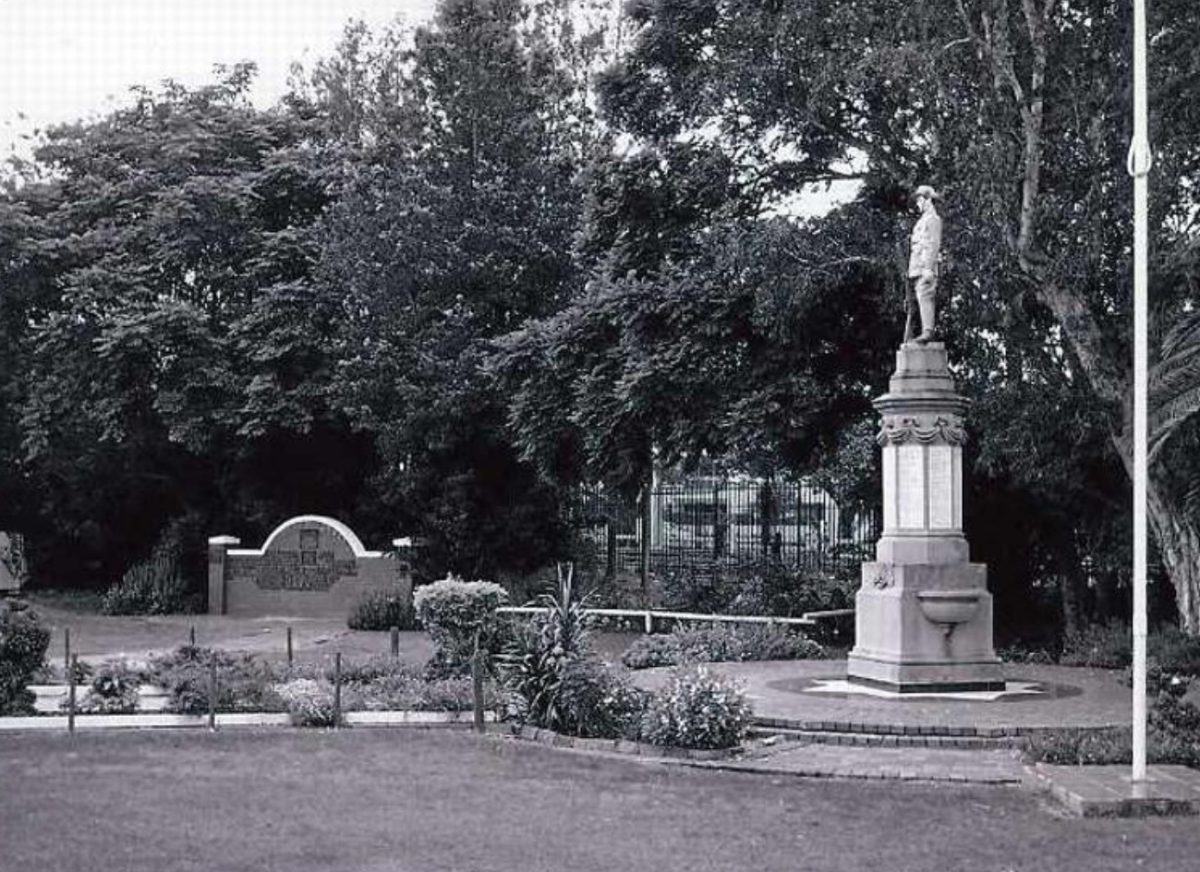
Thirroul War Memorial in 2007. Image: From the collections of Wollongong City Libraries and the Illawarra Historical Society – 18/P18382.
Wollongong Cenotaph, MacCabe Park
The Wollongong Cenotaph is a large sandstone arch of classical design. It features several marble plaques, inscribed with an honour roll for those who served in World War I. The arch was dedicated on 3 June 1923 at its original location outside Wollongong Council Chambers. In 1984, it was moved to MacCabe Park in the Wollongong CBD, where it forms part of the MacCabe Park Memorial Complex. The two focal points of the complex are Wollongong’s most historic war memorials: the Wollongong Cenotaph and the Trooper Frank Andrews Memorial. Trooper Andrews was a volunteer with the 1st Imperial Bushmen who was killed in action at Ottoshoop, South Africa, on 27 August 1900 aged 20 years. There is also the Wollongong Aboriginal and Torres Strait Islander War Memorial, a large bushrock with a bronze plaque and a dedication to all Aboriginal and Torres Strait Islander service men and women who have died during service.
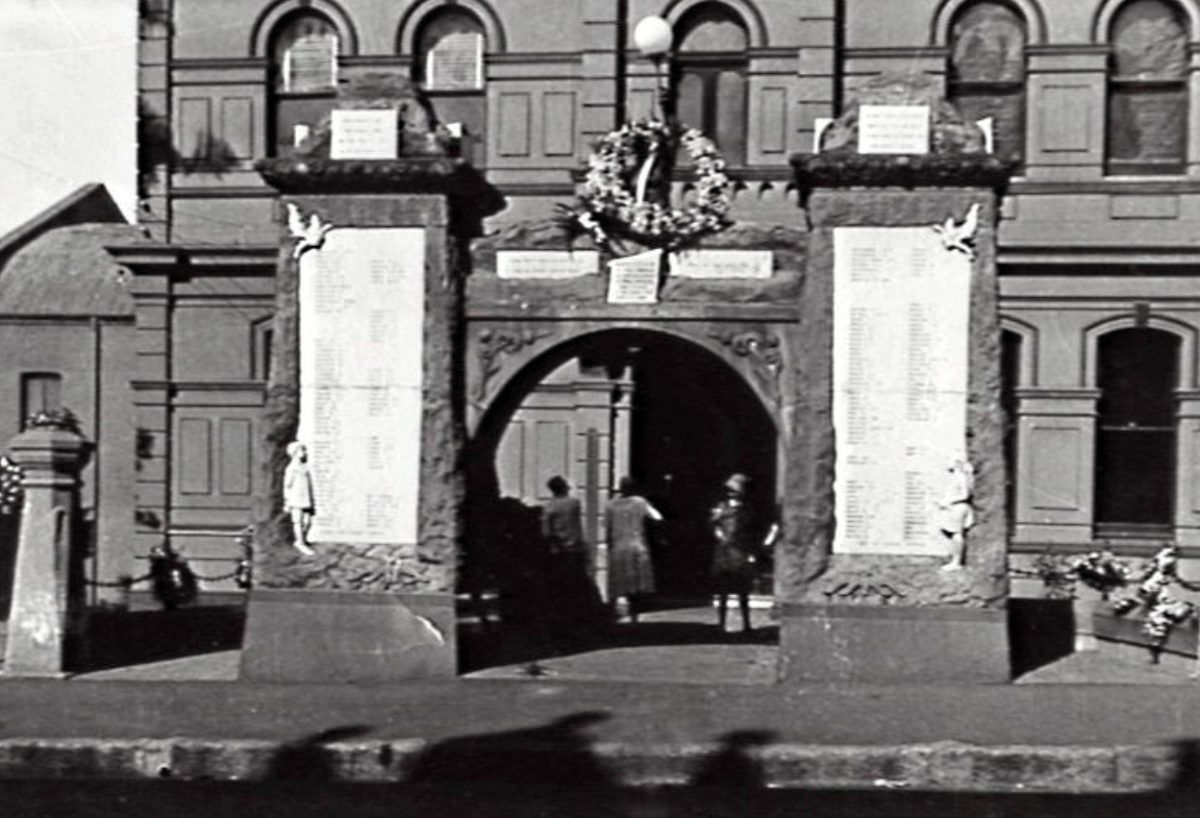
Wollongong War Memorial in its original location outside Wollongong Council Chambers, 1920. Image: From the collections of Wollongong City Libraries and the Illawarra Historical Society – P02/P02923.
Shellharbour Village War Memorial, Caroline Chisholm Park, Addison Street
In 1900, the Shellharbour community banded together to petition for a memorial for a Shellharbour lad who died in the Boer War. Private Samuel Charles Atchison of the NSW Mounted Rifles Colonial Military Forces was mortally wounded and died in South Africa on 20 February 1900. He was born in 1877 at Shellharbour, one of eight children who grew up on the family farm at Bass Point. According to the Discover Shellharbour website, the marble memorial was originally placed at Little Park on 30 May 1900 but due to erosion it was moved to a flatter area in 1957. The monument was moved to Caroline Chisholm Park in 1982, together with the World War I, World War II and Cities Service Boston memorial. The US tanker Cities Service Boston hit an offshore reef during a storm in 1943. The captain drove the vessel onto the rocks of Bass Point to avoid it breaking up in deep water. The plaque is dedicated to four Australian World War II veterans who died while rescuing the 62-man crew of the tanker. An unveiling and wreath laying ceremony was held by the Warilla RSL sub-Branch on 20 February 2000, 100 years after the death of Private Atchison. The Shellharbour City Memorial, on Memorial Drive, opened on 4 June 2003. It serves as a generic memorial to honour those who lost their lives in war or other conflict, or serving the community.
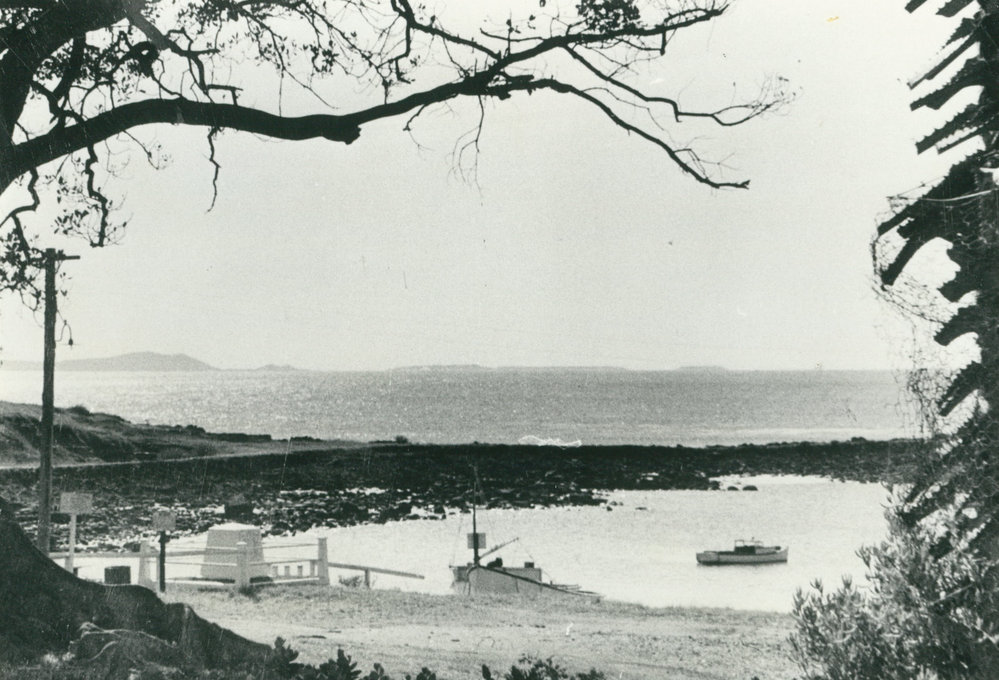
The Shellharbour war memorial was originally erected in Little Park, Shellharbour. Photo: Discover Shellharbour.
Kiama Memorial Arch and Wall of Remembrance, Hindmarsh Park, Terralong Street
The traditional triumphal arch with brown marble has a dedication and name plaques attached for World War I servicemen from the local area. The monument was built of stone from the Kiama quarries. Honour roll names and anniversary plaques for the Second World War have since been added. The memorial arch was unveiled by the NSW premier Sir George Fuller on 25 April 1925. Nearby are several bushrock memorials and the Gordon Grellman Wall of Remembrance, which includes numerous plaques for individual service men and women. Gordon Grellman was a World War II pilot and former Kiama/Jamberoo RSL sub-Branch member.

Kiama Memorial Arch in 1925. Photo: Kiama Library.
Gerringong RSL sub-Branch Anzac Memorial
In 2013, Gerringong RSL sub-Branch decided it wanted to do something to commemorate the 2015 Centenary of Anzac. It received a grant to upgrade an existing memorial on the eastern headland of Gerringong, at the intersection of the eastern end of Belinda Street and the southern end of Tasman Drive. The area already had a descendant of the original Lone Pine, which was planted in 2004 and accompanied by a history plaque attached to a bushrock. The tree was grown from the original tree famously known as the Lone Pine, where the original ANZACs fought the Turks in the 1915 battle at Gallipoli. The grant was used to construct a footpath from Tasman Drive to the flagpole, and to place gardens along the path. The path was unveiled in 2018, as well as a plaque commemorating 100 years since the cessation of World War I.
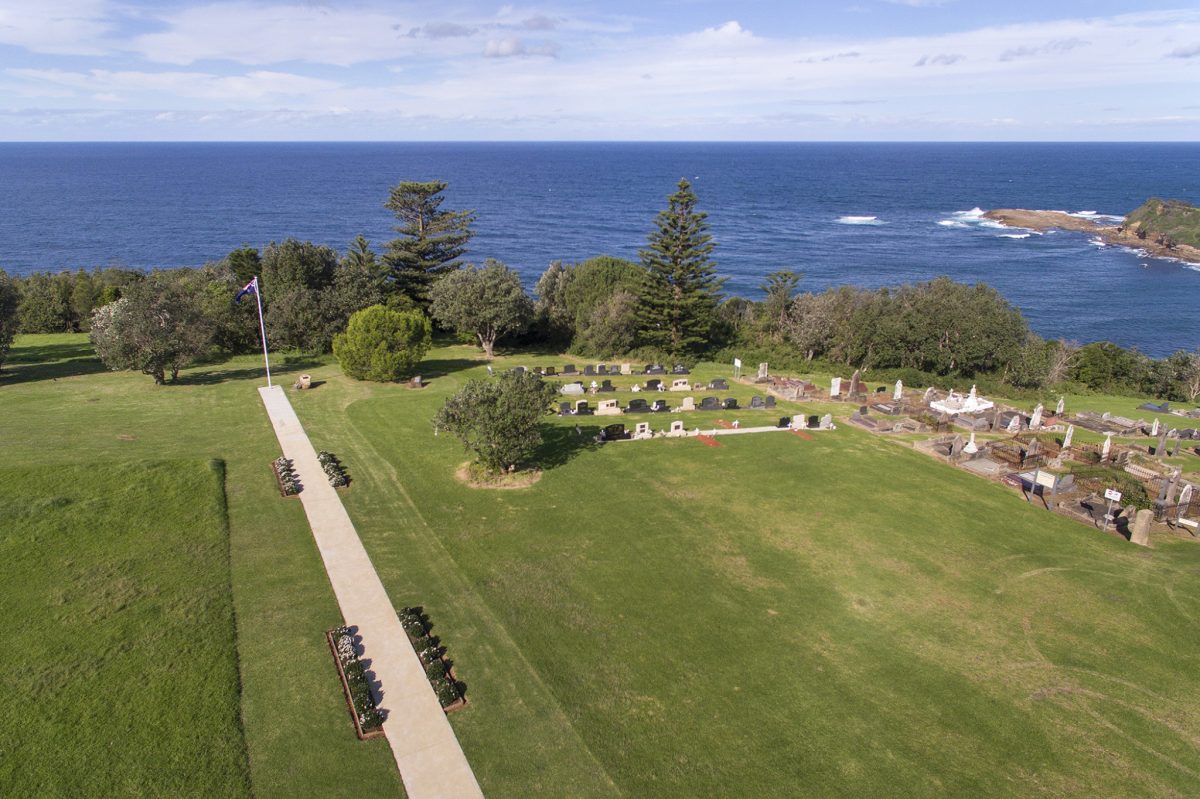
The war memorial on the eastern headland of Gerringong, with the lone pine to the right of the flagpole. Photo: Gerringong RSL sub-Branch.








